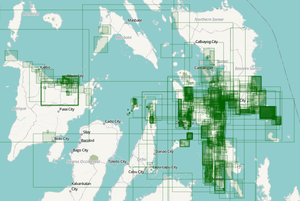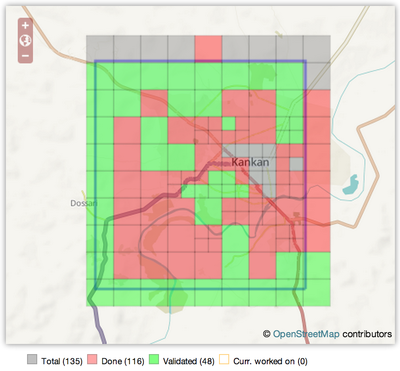HurricaneEta
For Aid Organizations
Map and Data Services

About OpenStreetMap
OpenStreetMap offers an online map (and spatial database) which is updated by the minute. Various tools and services allow data extracts for GIS specialists, Routable Garmin GPS data, Smartphone GPS navigation, and other device-compatible downloads. With an internet connection, regular syncing is possible with open access to the community contributed data as it comes in, with OpenStreetMap's bulk data downloads ideal for use offline. In addition, maps can also be printed to paper.
Browse the Activation Area to get a feel for the data that is currently available. Different map styles including an Humanitarian style can be selected on the right side, and some data may not render (appear) on the map, but could be exported from the underlying database (See export section below).
Paper Maps
Poster size Maps and normal sized paper atlases of custom areas can be printed:
- See OSM_on_Paper for an overview and list of platforms and services for printing maps.
- We suggest FieldPapers Paper Maps with grid for field survey or general navigation purposes.
Exporting OpenStreetMap data
See Downloading data for instructions on getting large scale map data, or see the focused exports below:
- Custom exports can be created on the HOT Export Tool
- Regularly updated OpenStreetMap exports are available on the Humanitarian Data eXchange (HDX)
With the availibility of Small communication devices, Navigation Offline data proves to be very useful to the humanitarians deployed in foreign countries. We support the humanitarian NGO's using navigation data and invite them to give us feedback on the utilization of these devices in the context of field deployment.
- See Software/Mobile for more information on using OSM in portable devices.
- See also Mobile Mapping on LearnOSM.org for information on mapping in the field.
Usage of OSM data for Humanitarian Missions
- Example CartONG Map
- Please post links/reports here...
About This Disaster Mapping Project
About HOT

- To learn more about the Humanitarian OpenStreetMap Team (HOT), explore more of our wiki-pages (root: HOT) or our website hotosm.org. We are a global community of mostly volunteers, we are also a US Nonprofit able to contract with organizations (email info at hotosm.org to contact our staff), we are also a 501-c-3 charitable organization.
History of this Activation
Reactivity of the OSM Community
- 4 November - Members of the HOT community had been preparing by contacting community members in Central America
- 5 November - By the time Hurricane Eta made landfall, the HOT community was well poised to respond and the local community was providing general location of areas hit hard.
HOT Activates
- 6 November - although there were no immediate requests, HOT Activators made the decision that the area along the Nicaraguan coast where Hurricane Eta made landfall was lacking elements of a good basemap. Therefore an Activation was launched.
- 13 November - Hurricane Iota formed and followed nearly the exact path, making landfall just 15 miles from Eta's landfall. It was determined to just include mapping for Iota in this same Activation.
Effort made
- In the first week of the response (November 4-11), 150 mappers made 72,157 edits, creating over 11,000 buildings source
- By January 20, 2021 - over 1000 mappers have added 153,000+ buildings and a total of nearly 165,000 features in the area impacted by Hurricanes Eta and Iota. source
For Mappers
- This response is concluded, thank you!
How You Can Contribute

Learn to Map
- Most of our volunteer needs are for remote OSM contributors, visit LearnOSM.org to get started.
Mapping Priority
- Visit the HOT Tasking Manager - Please choose from highest priority first
- Experienced mappers are also asked to participate in validating completed tasks. Information on validating can be found here
